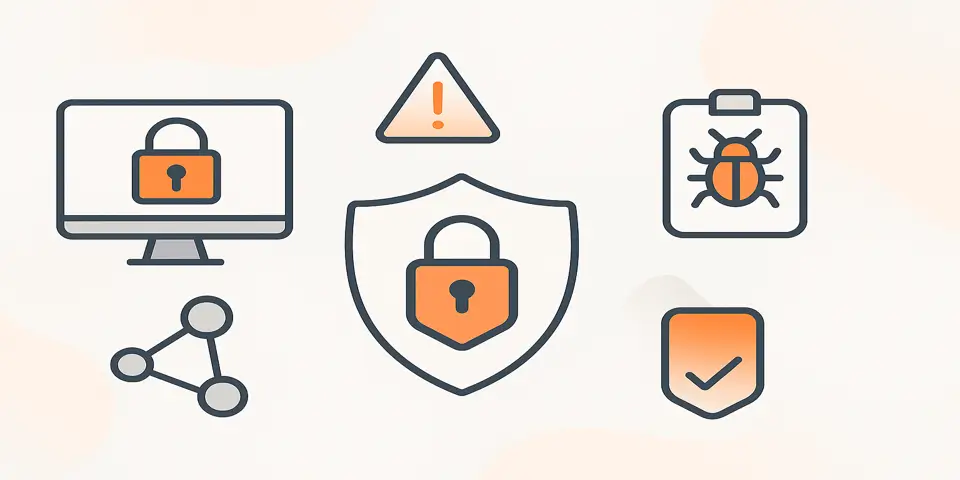15 Min To Powerful Cybersecurity Solutions for Small Businesses
In today’s fast-paced digital landscape, cybersecurity is no longer just a concern for large corporations. Small businesses, generating substantial revenues, face increasing threats from cybercriminals who are becoming more sophisticated and targeting vulnerable systems. The impact of cyberattacks can be devastating, leading to financial loss, reputational damage, and customer mistrust. So, how can small business owners navigate this complex environment and safeguard their enterprises?
Table of Contents
- Understanding the Cyber Threat Landscape for Small Businesses
- Step 1: Conduct a Comprehensive Cybersecurity Audit
- Step 2: Implement Strong Access Controls
- Step 3: Educate and Train Your Employees
- Step 4: Utilize Advanced Cybersecurity Technologies
- Step 5: Develop a Cyber Incident Response Plan
- Conclusion: Secure Your Business Future Today
This blog will guide you through five essential steps to manage cyber risks efficiently. By implementing these strategies, small businesses can strengthen their defense mechanisms, ensuring resilience against potential threats.

Understanding the Cyber Threat Landscape for Small Businesses
Before diving into solutions, it’s vital to comprehend why small businesses are appealing targets for cybercriminals. Usually, organizations of this size have fewer resources dedicated to cybersecurity, making them easier prey. A successful attack can disrupt operations, cause data breaches, and lead to severe financial and legal repercussions. According to a study by CNBC, 43% of cyberattacks target small businesses, yet only 14% are equipped to defend themselves effectively.
Step 1: Conduct a Comprehensive Cybersecurity Audit
A Foundation for Safeguarding Your Business
The first step in managing cyber risk is understanding the current security posture of your business. Conducting a comprehensive cybersecurity audit helps identify vulnerabilities and areas of improvement. Here’s how to begin:
- Assess Your Assets: Determine which digital assets are crucial to your operations, including customer data, intellectual property, and operational software. Knowing what you need to protect is the first step in building an effective security strategy.
- Identify Vulnerabilities: Work with IT professionals or a cybersecurity partner like SySpree to pinpoint weak spots in your systems. This can include outdated software, unpatched systems, or unsecured networks.
- Evaluate Your Defenses: Examine existing security measures such as firewalls, antivirus software, and encryption protocols. Testing their effectiveness helps in understanding where enhancements are needed.
Regular audits not only reveal potential weaknesses but also keep you compliant with industry regulations, shielding your business from legal complications.

Step 2: Implement Strong Access Controls
Keep Unwanted Visitors Out
Effective access control is a cornerstone of cybersecurity. By implementing robust measures, you ensure that only authorized personnel can access sensitive information. Here’s what you can do:
- Use Multi-Factor Authentication (MFA): MFA adds an additional layer of security by requiring users to provide two or more verification factors, reducing the likelihood of unauthorized access.
- Role-Based Access Control (RBAC): Limiting data access based on roles and responsibilities ensures employees only have access to information necessary for their job function, minimizing exposure.
- Regularly Update Credentials: Encourage your team to regularly change passwords and avoid using the same credentials across multiple platforms.
Strengthening access controls can significantly reduce the risk of a data breach, shielding sensitive business information from unauthorized access.

Step 3: Educate and Train Your Employees
Build a Human Firewall
Employees are often considered the weakest link in cybersecurity, but they can also be your first line of defense. By investing in employee education and training, you empower them to become vigilant against threats.
- Conduct Regular Training Sessions: Organize workshops or seminars to keep your team informed about emerging cybersecurity threats and best practices.
- Promote Security Awareness: Cultivate a culture of security awareness by encouraging employees to report suspicious activities and adopt safe online behaviors.
- Simulate Phishing Attacks: Test your team’s preparedness by conducting simulated phishing exercises. This practice helps in identifying susceptible employees who might need additional training.
Empowering your workforce with knowledge and tools transforms them from potential vulnerabilities into a robust human firewall, crucial for your business’s cyber defense strategy.

Step 4: Utilize Advanced Cybersecurity Technologies
Staying Ahead with Cutting-Edge Solutions
As cyber threats evolve, so should your defense mechanisms. Leveraging advanced technologies ensures your business remains resilient against sophisticated attacks.
- Adopt AI-Powered Solutions: Artificial Intelligence (AI) can detect unusual patterns and potential threats in real-time, enabling swift action before damage occurs.
- Deploy Endpoint Security Solutions: Protect devices like laptops and smartphones with endpoint security to prevent breaches from malicious downloads or external drives.
- Utilize Cloud-Based Cybersecurity Services: Cloud solutions offer scalable security services tailored to your business needs, providing robust protection even with limited in-house resources.
SySpree provides comprehensive cybersecurity solutions that integrate these advanced technologies, offering businesses peace of mind amidst a growing threat landscape.

Step 5: Develop a Cyber Incident Response Plan
Preparedness is Key
Even with the best defenses, cyber incidents can occur. Having a robust incident response plan enables swift recovery and minimizes damage. Businesses Businesses Businesses Businesses
- Outline Clear Procedures: Establish protocols for identifying, containing, eradicating, and recovering from security breaches to ensure quick and efficient responses.
- Assign Responsibilities: Define roles and responsibilities within the organization to avoid confusion and facilitate smooth execution of the response plan.
- Conduct Regular Drills: Practice executing the response plan through simulations to ensure everyone knows their role during an actual incident.
A proactive incident response plan not only reduces recovery time but also diminishes business disruption, safeguarding your reputation and maintaining customer trust.
Conclusion: Secure Your Business Future Today
Cybersecurity is not a one-time effort but an ongoing commitment to protecting your business. By adopting these five essential steps, small businesses can significantly enhance their cyber resilience, ensuring continued growth and success in the face of digital threats.
Ready to fortify your business’s cybersecurity framework? Contact SySpree today for a consultation and discover how our tailored solutions can protect your enterprise from cyber risks. Stay one step ahead with SySpree, your trusted partner in cybersecurity.
Other blogs you might like –






This is my first time pay a quick visit at here and i am really happy to read everthing at one place